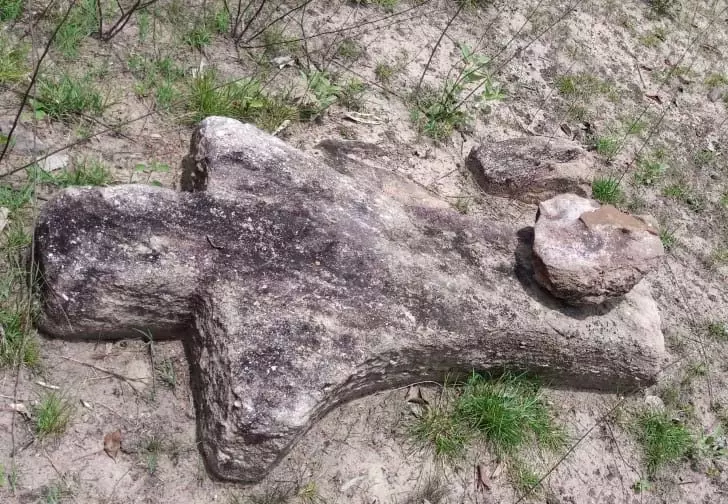Incredible find: Megalithic-era menhir unearthed in Telangana’s Mulugu
Menhirs with anthropomorphic figures are incredibly rare and can only be found in limited numbers across the world.
By Nikisha Uddagiri
Telangana: In a rare discovery, a human form of menhir dating back to the Megalithic era were unearthed in the Rajaram Suddhagutta area near Motlagudem village, Mangapet Mandal, of the Mulugu district in Telangana on Sunday. This incredible find sheds light on the existence and evolution of early humans in the region.
Members of the TORCH organisation and local heritage enthusiasts B. Karthik and K. Srikanth visited the site after being informed by Bangari Mohan, a resident of Motlagudem village. The menhir’s discovery is a significant milestone in the region’s history.
The menhirs, or vertical stones, found in the graves of important individuals within the local community are a common sight in Telangana. However, menhirs with anthropomorphic figures are incredibly rare and can only be found in limited numbers across the world.
According to Aravind Arya, a young archaeologist, “The menhir stone discovered in this area is six feet high and has a width of four and a half feet and depicts a human figure with a curly head, an oblong chest, shoulders, and a lower waist.”
He further explained, “In ancient times, menhirs were created to depict prominent personalities of the community, similar to how memorial stones with photos and names of the deceased are engraved in front of graves today. These menhirs were crafted to reflect their unique features, including facial features and structure.”
Aravind added, “Approximately 8 to 10 male and female forms of menhirs have been identified till date which resembles the discovered anthropomorphic menhir. All of these menhirs were found in the Kachanpalli, Galaba, and Gundala areas of the Khammam district. The discovery of the human form menhir in the Godavari river basin is a significant breakthrough, and it is expected to inspire further research into the history and evolution of humans in the area.”
However, the recent destruction of hundreds of primitive graves near Koththuru village for the construction of village houses is a painful loss. Aravind urged the officials of the archaeology department and villagers to protect the remaining heritage site as the destruction of these sites not only erases important pieces of history but also denies future generations the opportunity to learn about their cultural heritage.
“Unfortunately, the rare memorial stone has already been broken into two pieces by locals who were unaware of its importance. It is essential that we take steps to protect these rare monuments and preserve them for future generations,” said the secretary of the NGO TORCH (Team of Research on Culture and Heritage).
The discovery of this menhir is a reminder that we must make an effort to protect and preserve our cultural heritage. As Aravind Arya said, “These ancient menhirs are an essential link to our past, and we must work to ensure that they are protected for future generations.”